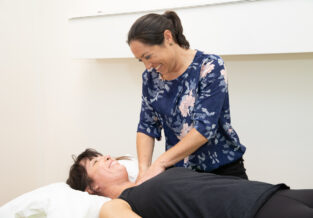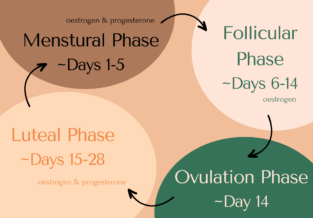Exercising while expecting.
Published on
05 Dec 2016

Call us on: (03) 9975 4133
A healthy body makes for a healthy pregnancy – Kirstie Tyson shares some tips for staying active with a baby on the way.
Congratulations!
So you’ve just found out you’re pregnant, how exciting! With all the new challenges pregnancy brings, it’s also important to stay active. We believe that considering regular exercise can benefit you (and your baby!) throughout your pregnancy.
Exercise routines should include a combination of cardio and resistance-based training, with the goal to maintain a reasonable level of general health throughout your pregnancy.
Why exercise?
The benefits of exercise are amplified during pregnancy. From helping to improve your physical and mental wellbeing, through to pain relief and exercise-induced analgesia – it’s an opportunity to unload stress. Exercise can also help with shifting baby-weight post-delivery and reduces your risk of developing gestational diabetes.
As the pregnancy progresses, you will notice significant changes in your body. This may include an increased heart rate, a demand in oxygen supply, an increased laxity around your joints and a change in your centre of gravity – which can affect balance. Exercise may be used to assist with overcoming these issues.
The First Trimester.
Pregnancy can be divided into three trimesters, each of approximately 12-13 weeks’ duration. The first trimester can be one of the more challenging times to start a workout routine. Most women tend to be fatigued or afraid that they may harm the baby by exercising too intensely. The first trimester is also a notorious for causing regular nausea during its 12-week duration.
Despite these challenges, the first trimester is a great time to add some low-impact exercise to your routine. Keeping it light means that you’ll be able to continue with the routine as your pregnancy progresses.
So what are some good options?
- Swimming can be a nice change of pace. If you’re usually a runner, why not try supplementing your routine with some deep water running? You’ll still get the great cardio workout – without the impact directly hitting your feet.
- Pilates is another great option. It can help address two major issues we tend to see throughout pregnancy: balance and the development of lower back pain. Pilates focuses on building the core muscles through a combination of gentle floor and equipment based exercises. It is generally best to do a Pilates program with a qualified and knowledgeable instructor/physiotherapist to ensure safety.
- Resistance training can help build strength throughout your pregnancy. However, you should avoid loading in positions where you are lying on your back, straining or holding weights near your abdomen. As a general guide it is better to go for lower weights and higher repetitions to avoid over-exertion.
There are plenty of other options for exercise throughout the first trimester – working with an exercise or health professional can be the easiest and safest way to guarantee both you and your baby’s health throughout your pregnancy.
Keep in mind to stop exercising immediately if you notice any of the following:
- Nauseousness / a feeling of queasiness.
- You get too hot.
- You feel dehydrated.
-
You experience any vaginal discharge, bleeding or pain around the abdomen or pelvis.
As a general rule, if you can’t keep up a normal conversation whilst you exercise, you’re probably working out too hard.
The Second Trimester.
The second trimester tends to be the time when most women feel ready to progress their exercise. In clinic, I see a lot of expectant mothers who decide to take up yoga at this stage of their pregnancy.
Gentle, strength based yoga can be your best friend throughout pregnancy. Avoid bikram or hot yoga, as the hot temperatures associated with the ‘hot box’ can increase dehydration and put your baby at risk.
If you decide to try yoga for the first time during your pregnancy, it is best to get advice form an exercise professional (exercise physiologist, physio or a doctor) and try a prenatal yoga class (there are several offered around the Melbourne CBD).
Even if you have been running prior to the pregnancy, and continued running without issue throughout the first trimester, it’s now time to give up your trail runs.
It’s important to aim for flat, even surfaces, as your centre of gravity is changing and you are at an increased risk of falls. If you weren’t a runner before, now is not the time to start.
The Third Trimester.
The third trimester is when we all start to get a bit uncomfortable. The baby is heading towards its newborn weight and will begin to move towards the birth canal. Most women are quite uncomfortable exercising at this stage. If your third trimester falls in the summer months, you’re in luck, as you will be quite comfortable lazing about in the pool.
As you head towards the final stretch of your pregnancy, remember to keep eating well and exercising. As long as you are not at risk of a pre-term delivery, exercise is usually quite safe in the third trimester and can help get you in tip-top shape for labour and delivery.
If you were previously completing moderate-high intensity exercise it is best to get advice from your doctor about continuing your program, as the general recommendation is to reduce exercise intensity.
Overall, don’t forget to stay happy, and take it easy when you need to. Having a baby is an exciting change and something to look forward to!
If you need help with structuring an appropriate exercise plan, please get in touch with us so we can tailor an individual program to suit your particular needs.


